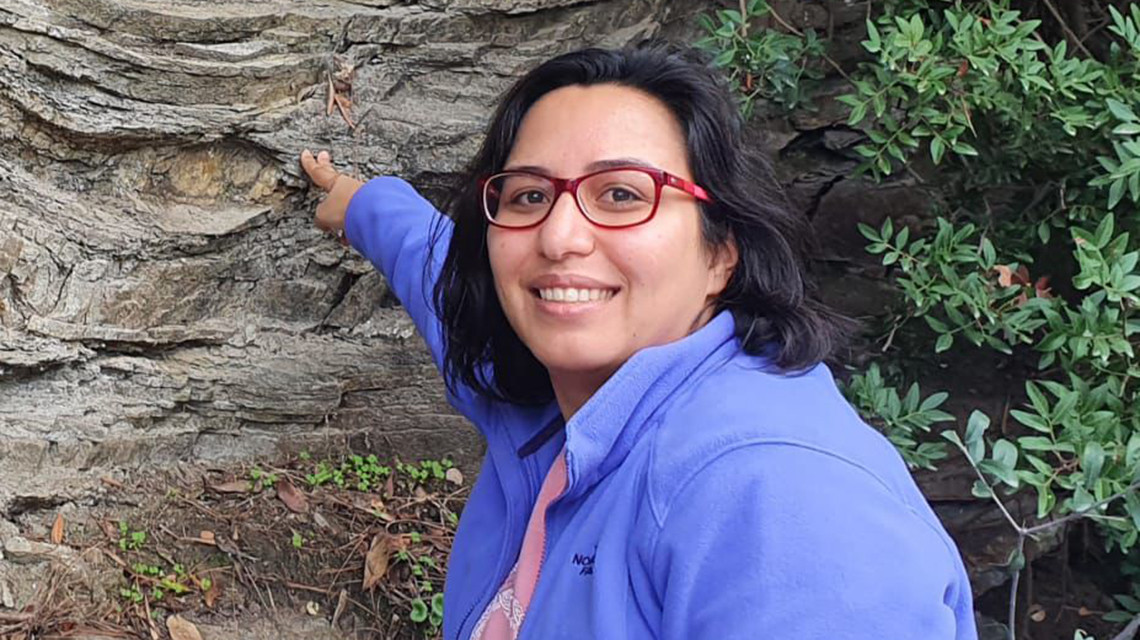The IAEA profiles employees to provide insight into the variety of career paths that support the Agency’s mission of Atoms for Peace and Development and to inspire and encourage readers, particularly women, to pursue careers in STEM (science, technology, engineering and mathematics) or STEM-adjacent fields. Read more profiles of women at the IAEA.
Zeynep Gulerce’s career has been shaped by earthquakes. She was a young civil-engineer-in-training in Türkiye when a magnitude 7.4 earthquake struck the Kocaeli Province of the country. It lasted 37 seconds and claimed more than 18 000 lives and injured tens of thousands of people. Hundreds of thousands lost their homes and businesses. Confronted by this devastation, Gulerce, like many in her generation, decided to dedicate her career to trying to ensure that never again would an earthquake take so much from so many people. After she graduated as a civil engineer, she obtained a masters’ degree in earthquake engineering from Middle East Technical University, followed by a PhD in the same subject at the University of California, Davis, in the United States.
“I think my generation of civil engineers in Türkiye felt this responsibility on their shoulders: to prevent the loss of lives in the next big earthquake,” Gulerce says.
After her PhD, Gulerce had no doubt where her responsibility lay. She returned to Türkiye, determined to apply the best practices she had learned, to compile as much data as possible about active faults and earthquakes, and to train the next generation of experts. Her goal was to ensure that when the next earthquake hit, countries would be better prepared to act to safeguard lives and property.
Over the next two decades, as a professor at her alma mater, Gulerce contributed to a variety of national and international projects, including a series of seismic hazard assessments for the critical infrastructure of Türkiye, and a NATO project to develop seismic hazard maps for the Western Balkan region. When Türkiye decided to re-start the national nuclear power programme, Zeynep was a natural choice as a seismic consultant for the nuclear regulatory authority. In this capacity, she also worked with the IAEA on a number of capacity building missions. In 2022, she joined the External Events Safety Section of the Division of Nuclear Installation Safety as a Nuclear Safety Expert.
For Zeynep, her work at the IAEA continues her life’s work of building engineering capacity to mitigate and prevent earthquake damage. At the IAEA, this means supporting countries to develop comprehensive seismic hazard assessments at the site of a prospective nuclear facility and to use the results to perform safety analyses based on the IAEA safety standards.
“Nuclear power is needed to meet energy needs,” Gulerce says. “You cannot avoid all regions where earthquakes are frequent. If you have sufficient resources, and as long as you estimate the risk accurately, and adapt your plans accordingly, you can build anything anywhere. We support countries to make the best use of their resources to evaluate and mitigate seismic risk.”
Adapting to different countries’ approaches to estimate seismic hazards, and learning about their different needs, has been a particular learning opportunity for Zeynep at the IAEA.
Zeynep has also developed skills in a new, but equally important area: examining how climate change can impact the resiliency of nuclear installations and how safety assessment methods should be adapted to mitigate climate-related hazards.
Climate change, she explains, is likely to challenge the nuclear industry in a way that earthquakes may not, because of its uncertainty.
She explained that power plants, including nuclear ones, are robust structures that are built to handle climate-related events, but the analyses generally are based on past weather records. However, climate change is causing weather conditions to be much more severe than in the past. “One good example is the increasing number of heatwaves, where nuclear power plants have had to stop operations due to rising temperatures. Because these nuclear facilities need to remain safe and stable for decades, we need to find new methods to include the changing climatic conditions in our safety assessments”, she says.









